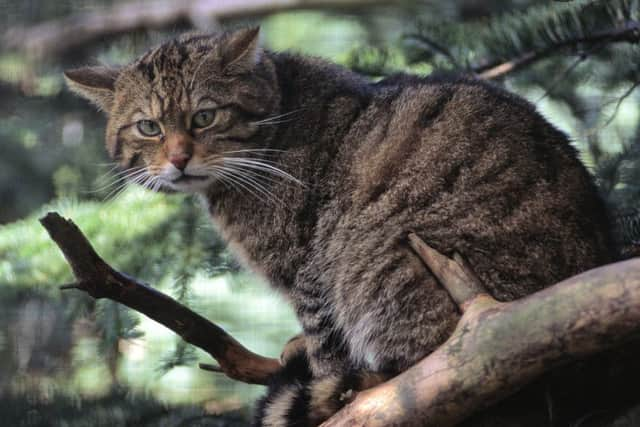Wildcats ‘no longer viable’ in the wild after 7,000 years
The report, by cat specialists from the International Union for Conservation of Nature, reviews all evidence collected and concludes there is no longer a viable wildcat population living wild in Scotland.
It suggests captive breeding and reintroductions could be the only way to guarantee the species will continue to exist in Scotland, where it has been present since the last ice age.
Advertisement
Hide AdAdvertisement
Hide AdDubbed the Highland tiger, the wildcat is one of the UK’s most endangered mammals.


Cross-breeding with pet and feral cats has been cited as the key threat to their natural survival. It is thought hybridisation began to affect the species severely between the 1950s and 1980s, driven by decreasing food sources, road kill and persecution by humans.
Scottish Wildcat Action (SWA), a national conservation scheme, was set up in 2015 in a last-ditch bid to rescue the species from the brink.
However, it’s now thought previous estimates of the number of pure-bred wildcats remaining in the wild were way too high.
Dr Andrew Kitchener, principal curator of vertebrates at National Museums Scotland and chair of the SWA steering group, said: “We now have the strongest and most reliable evidence to date that wildcats are in a more endangered state than previously understood.
“While we believe there are wildcats remaining in the wild in Scotland, there are no longer enough to ensure their continued survival as viable populations.
“We can now plan the essential next steps to give the wildcat a sustainable future.”
Environment secretary Roseanna Cunningham has said no stone will be left unturned in the quest to save the nation’s only native feline.
Advertisement
Hide AdAdvertisement
Hide Ad“The wildcat is an iconic Scottish species and as such I will consider every possible action the Scottish Government can take to save it, including an increased focus on captive breeding and reinforcement of the Scottish population with wildcats from elsewhere,” she said.
“We have in place a partnership of scientists and specialists with the knowledge and expertise to give us the best chance of restoring the Highland Tiger as a distinctive and charismatic species in the Scottish countryside.”